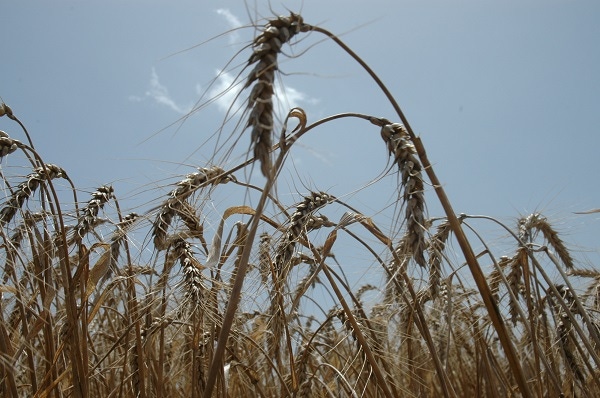
In spite of wheat prices falling from last year's record highs and futures currently selling for nearly $2.50 less a bushel than last year, South Texas farmers are taking a long look at increasing winter wheat acres, partially because of renewed demand at local export elevators and also because of an improved rail infrastructure connecting the ports of Corpus Christi and Brownsville that could lower shipping costs significantly to distant ports around the world.
According to a Rail Capacity Expansion report from the Texas Department of Transportation, the combined ports of Corpus Christi and Brownsville stand to rake in economic benefits from a rail project nearing completion that improves line capacity between Southeast Texas and Deep South Texas. The project will relieve congestion at the Port of Houston and will usher in a new day of export opportunity to South Texas producers.
According to the report, export grain elevators at Corpus Christi are expanding to meet current and future demand for grain export capacity. Thanks to rail project improvements, both Corpus Christi elevators will soon be able to handle large 110-car shuttle trains that are delivered by the Class I railroads that serve the port.
For the latest on southwest agriculture, please check out Southwest Farm Press Daily and receive the latest news right to your inbox.
The South Texas Rail Expansion Project allows trains to haul 18,000 pounds more product per car or 1,000 tons of additional grain on each 110-car train. By having a more efficient rail/port/elevator network in South Texas, farmers across America will be less likely to be forced to stockpile grain on the ground waiting for transportation. Combining smooth Class 1 rail movements and two high throughput elevators with deepening of the Corpus Christi Ship Channel to 52 feet – in the future –will allow South Texas to efficiently load the largest grain ships calling on the Gulf Coast.
Enhances competitiveness
Supporters say the South Texas Rail Capacity Project enhances the economic competitiveness of the nation by improving connectivity to ports and increasing market access through enhanced rail service competition. It improves the ability of manufacturers and agricultural producers to compete globally by providing greater opportunities for shipment to any global export market through lower costs and greater reliability.
The creation of the rail project and the increased activity of the two major export elevators at the Port of Corpus Christi have already increased demand for wheat production across coastal Texas. As such, Jason Ott, Texas AgriLIfe CES-Ag/NR for Nueces County, expects increased planting of winter wheat this fall. Ott says last year a mere 7,300 acres of wheat was planted and only 3 percent of cropland acres in the lower Coastal Bend were utilized for winter wheat production.
More interest in wheat
But several factors contributed to more interest in wheat production in the Lower Coastal Bend since last year, one of which was the success of the crop in the 2013-14 growing season. Ott says while county yield estimates range between 30 to 35 bushels on average, he also heard of yields in the 60s. During last season’s harvest, strong demand for wheat at the port raised the base to about $2 a bushel, putting cash sale price for wheat around $9.50 a bushel. Since then all commodity prices have been in a steady fall, but wheat is still expected to fare better compared to other commodities.
In addition, weather conditions may be setting up perfectly for a wet winter and spring season, a good indication of a possible good wheat year.
But not all that glitters is gold. Ott says producers considering planting wheat following another crop should evaluate potential for residual herbicide injury to small grains. Before planting, growers should review their pesticide application records and then check labels of herbicides applied to previous crop for fallow crop restrictions.
Many commonly used herbicides for wheat are persistent and have crop restrictions. For example, sorghum should not be planted for 22 months following an application of Maverick. For cotton the crop rotation restriction is 12 months.
If wheat becomes a crop choice for local growers, Ott advises the first yield limiting factor in wheat is often water followed by fertility. He suggests that a grower apply approximately 40 percent of the nitrogen application pre-plant with the remaining portion applied in January.
AgriLife Extension has several resources available to producers considering including wheat in this year’s crop mix.
About the Author(s)
You May Also Like




